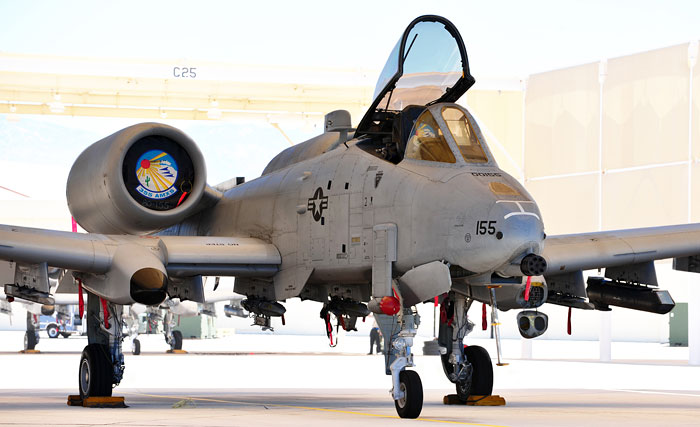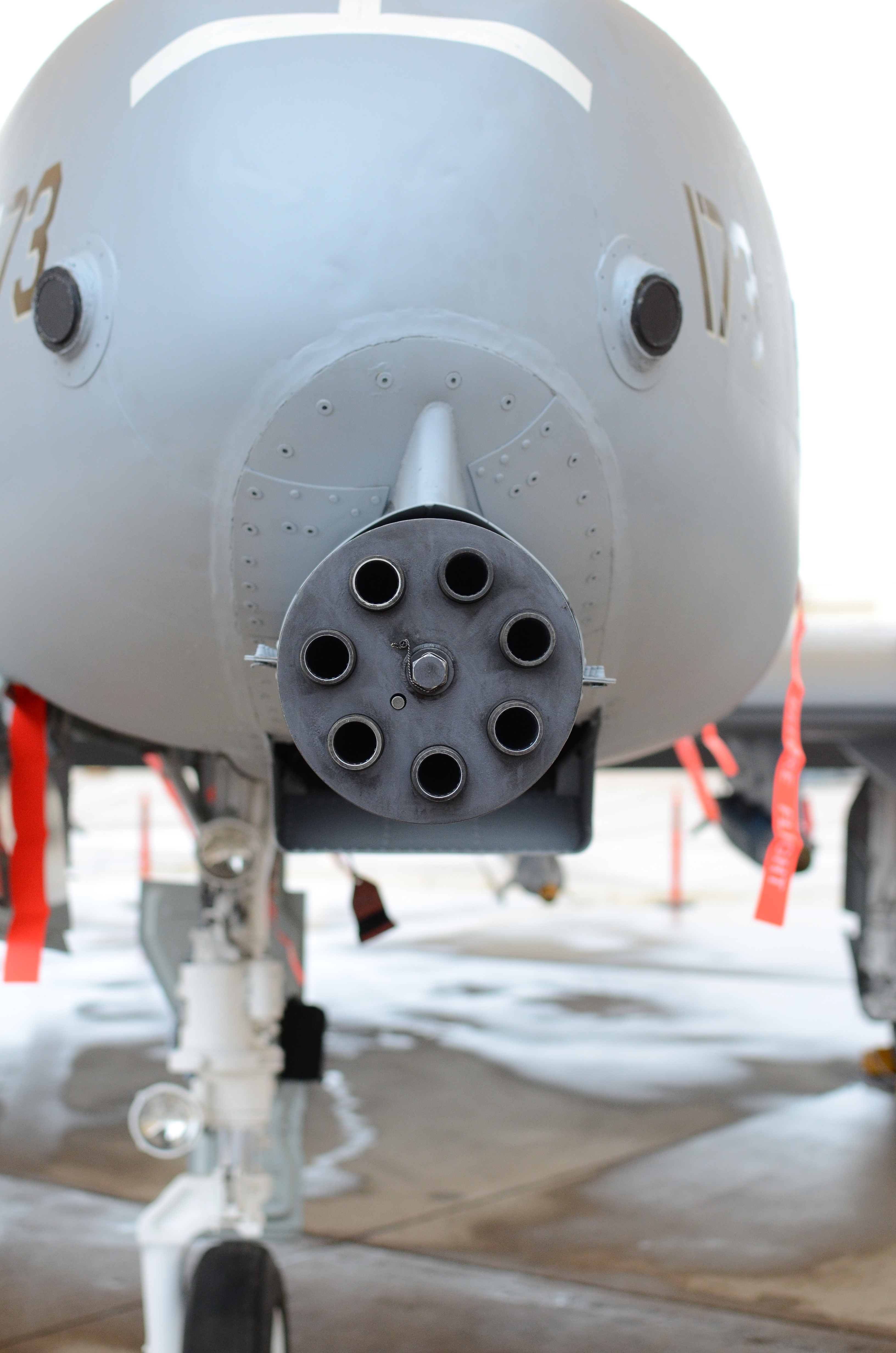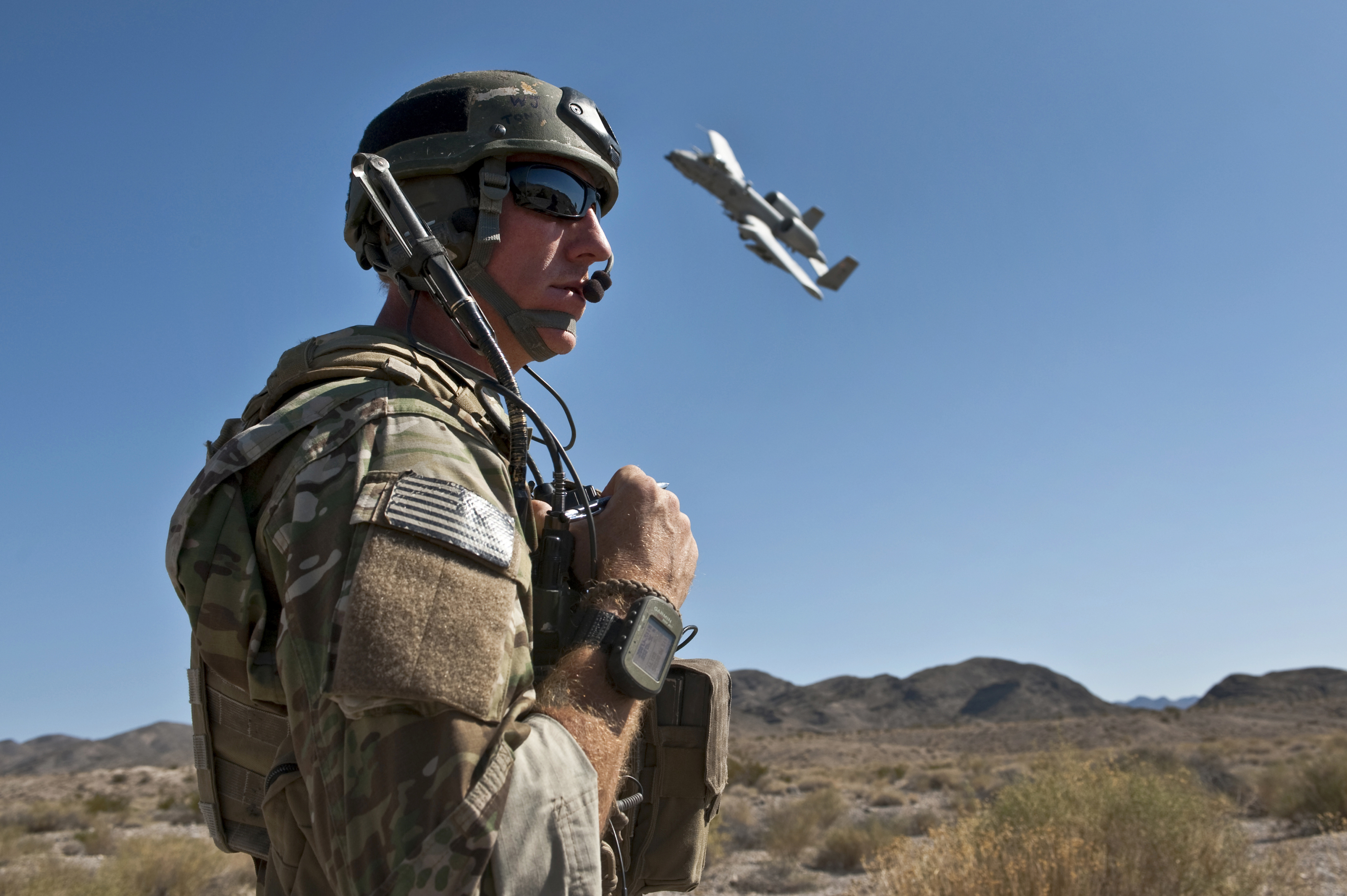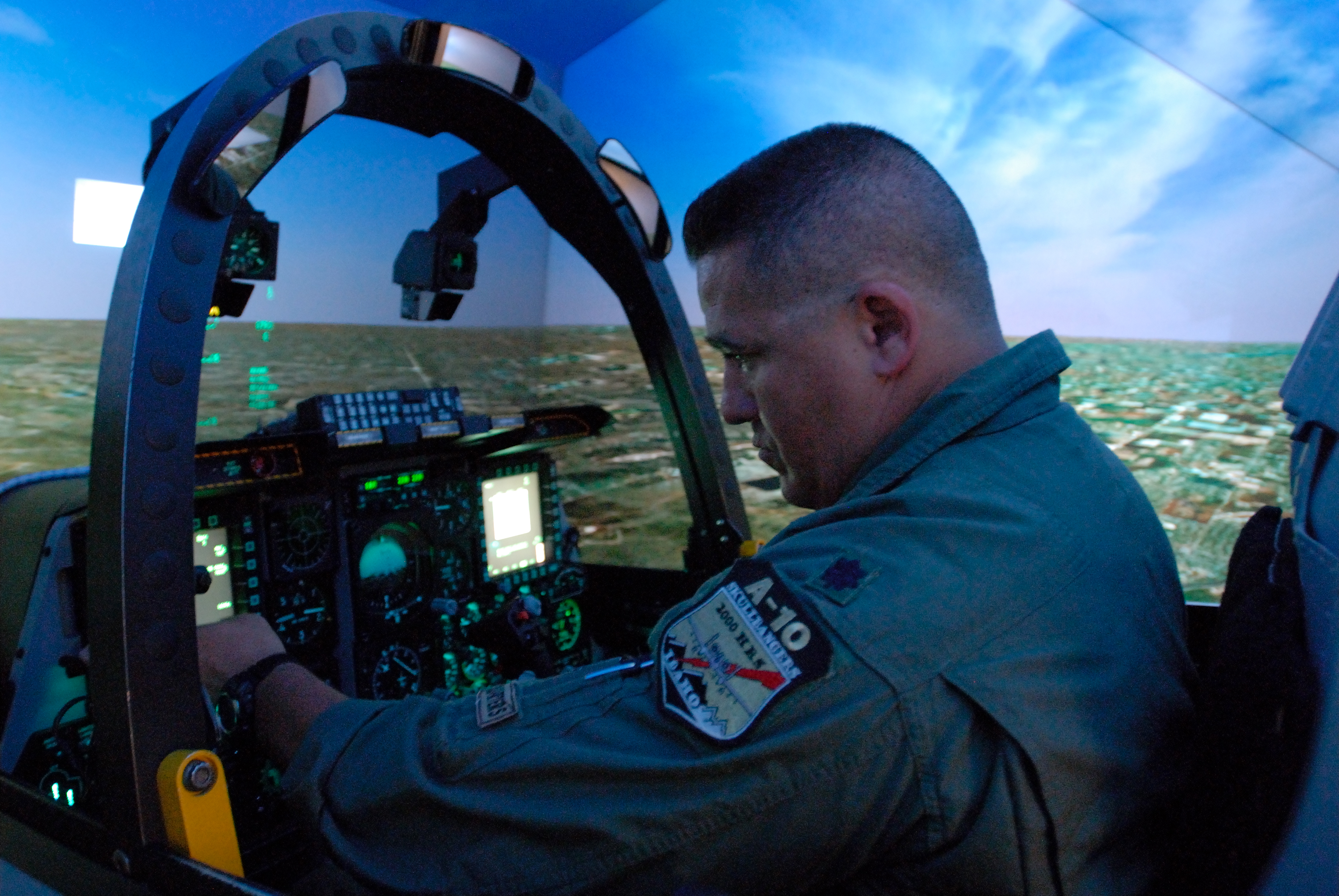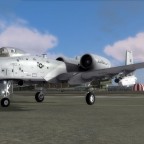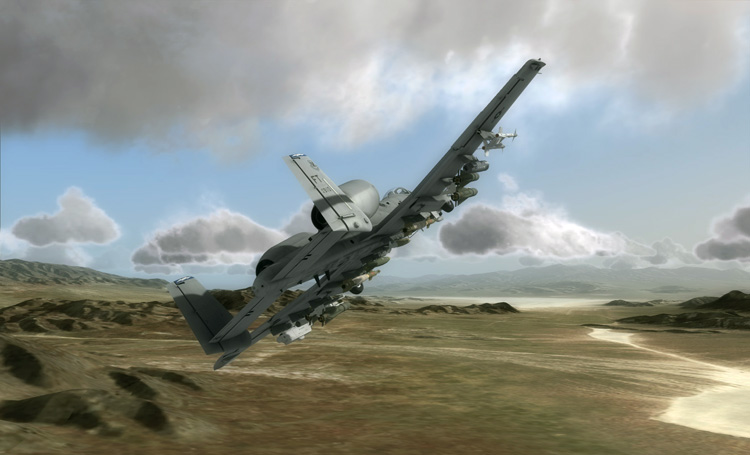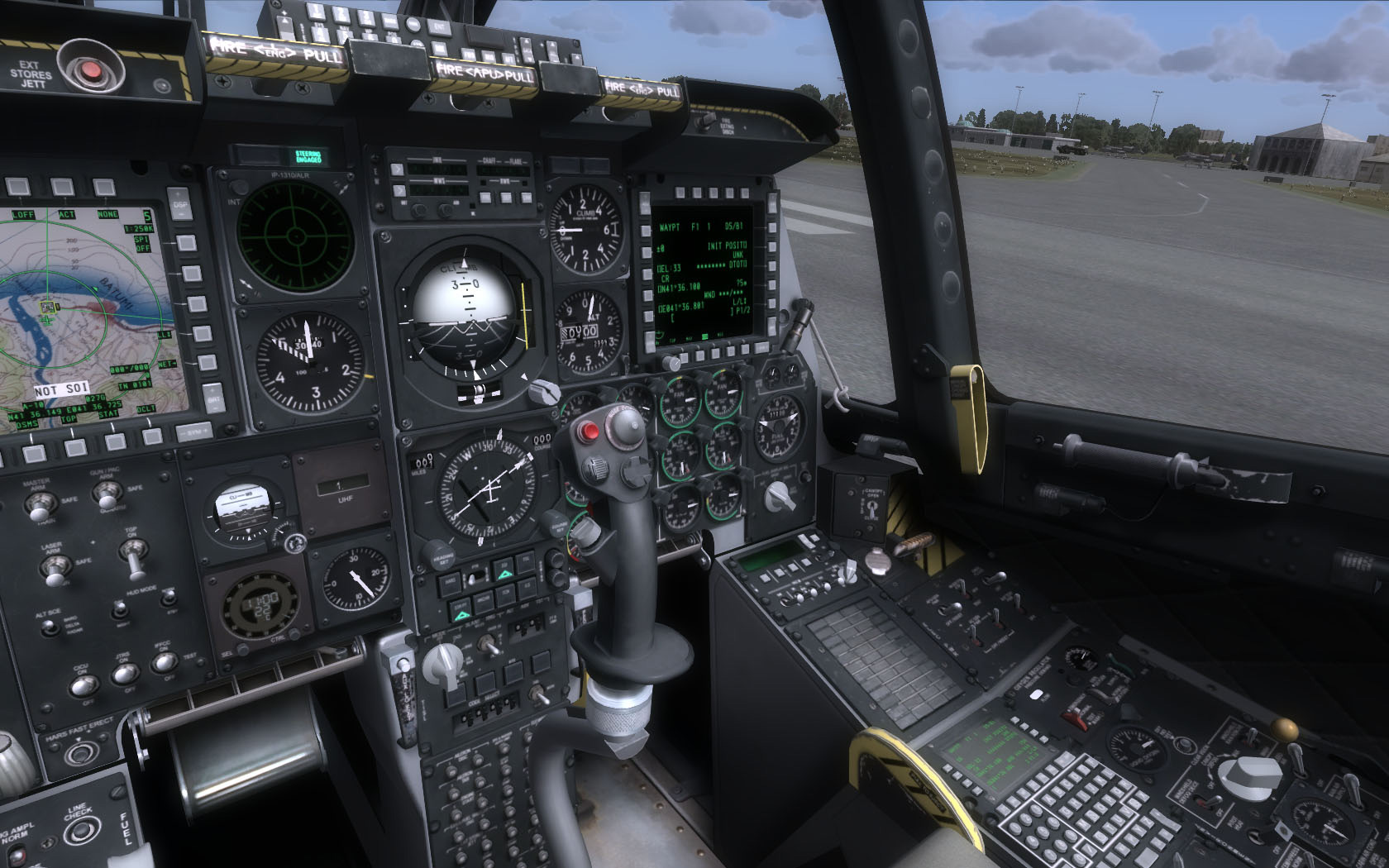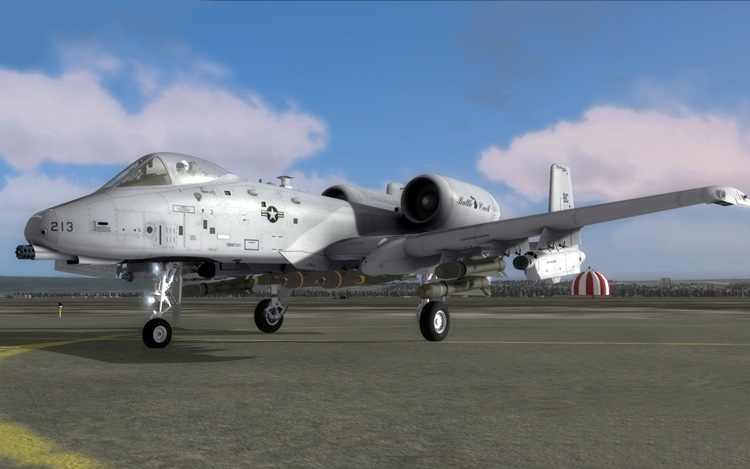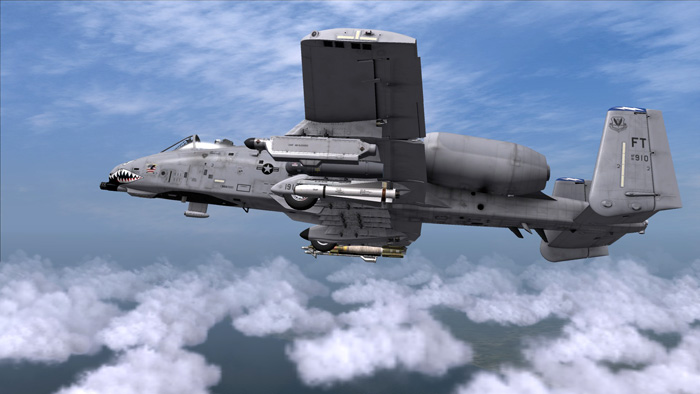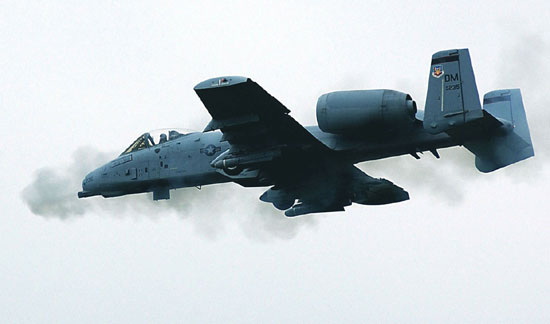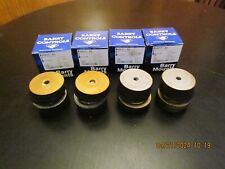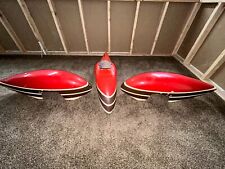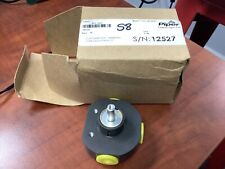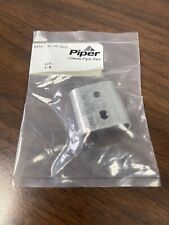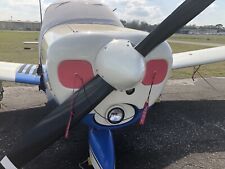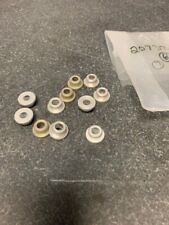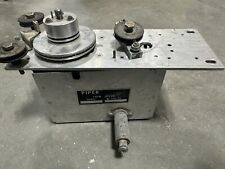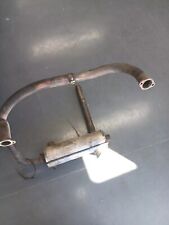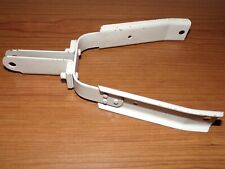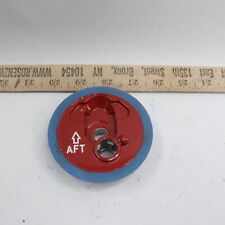I am a Warthog addict. Who isn’t, right? I do my best to immerse myself in the Warthog world: books, all the YouTube videos I can watch, and, of course, I spend as much time as I can afford in Eagle Dynamics’ DCS A-10C Warthog with my Thrustmaster Warthog HOTAS. To us fanbois (and fangurls), the Hog is an amazing piece of machinery – but what must it be like in the eyes of the men and women who actually get to flight and fight in these wonderfully fearsome beasts?
I was given a very special opportunity to interview A-10C Warthog Pilot Kyle Lanto of the 358th Lobos squadron from Davis Monthan Air Force Base, Tucson, Arizona and ask him those questions.
Grilling A Hog Driver
Erik: How did you get your call sign, “SWAT”?
Captain Lanto: My wife and I were doing the 9-mil training the Air Force requires and she beat me… pretty handily. So the guys in the squadron thought it would be funny to call me a sharpshooter, “Special Weapons and Tactics” – that’s where I got the SWAT. You can tell that my wife is also in [the military]. She is pretty good with a 9 mil… unfortunately. <laughs>
Erik: How many flight hours do you have in total?
Captain Lanto: In total I have about 1800-1850, somewhere around there, and that’s including all the T37 and T38 time that I acquired through training. In the Hog I have 1300, about 450 combat.
Erik: I understand you have an interesting story for how you got to be an A-10 pilot.
Captain Lanto: I do, it’s interesting. It’s quite a path how I ended up here. I started with the Marines. First, I wanted to fly off carriers and I wanted to support the ground guys, always. Why did I want to do that? Because my older brother is in the Marines and my younger brother is in the Army. So for me to do this and be able to associate all the guys on the ground with my brothers, and go out there and help protect them that’s kind of why I ended up in the A-10. While I was in the Marine Corps I hurt my ankle during training. They said you could start over. And if you have ever been in Marine training, you don’t want to start over. I moved away from home and went to a university where they had an Air Force ROTC [Reserve Officer Training Corps] . I stayed with the Air Force ROTC and it’s been great.
Erik: Have you ever flown an A-10A?
Captain Lanto: I did. I spent about 600 hours in the A-10A and then transferred to the A-10C in December of 2007.
Erik: Our readers, at least at a high-level, know what’s different from an A-10A and the A-10C, but from the pilot perspective, how is the A-10C different than the A-10A?
Captain Lanto: If I could sum it up, the A-10A was analog and steam gauges and the A-10C uses 90’s tech that brings us up to speed with all the other Combat Air Force’s platforms. The “Chuck” (our name for the C model) makes us capable to drop every precision guided munition that the armed forces have. That’s the easy way to say it. When you get more technical about it, it gave us the multi-function displays that you see in all the pictures. [It gave us] HOTAS. It gave us a central interface control unit (CICU) that actually ties all the aircraft systems together. Before with the A-10A, they would give us something new, slap it on the jet, and then your control noggin or whatever you are using would be (Lanto pantomimes looking around) “somewhere” in the cockpit. With the new CICU it takes all those systems on the aircraft and it speaks to one central unit and pushes it out over the HOTAS. So now we control everything and everything talks to each other. It’s well done. It’s a great aircraft.
Erik: From the pilot perspective, that makes your job easier? Better? Faster?
Captain Lanto: Faster and much easier. To drop a bomb with the A-10A, what I’d have to do is … my armament control panel is down here on the left and it is literally a mock-up of the A-10 put on a dashboard with little lights that you punch. To pick a bomb I would punch the station then I have to select the fusing – another knob – then if I wanted to select like where it [ripple releases] two, I would have to type that in the intervalometer with a little wheel. Where in the A-10C I set all the profiles – we call them profiles for certain weapons – set them on the ground in the computer for whatever I’m going to do that day, put a hard disk in the computer, upload all the information, put it into the jet. When I call up that weapon [in the plane] all that stuff is done. With a flick of a switch I can be shooting rockets. And then I dive down and I’m ready to drop bombs or shoot the gun with just a flick of a switch. It’s pretty nice.
Erik: Does that computer give you any problems or is it pretty robust?
Captain Lanto: It’s pretty robust. It’s like any other piece of technology, it’s got bugs, but a lot less than I ever expected.What I was worried about and I think what most of the other guys were worried about was shooting the gun – what would that do to all the new processors and computers inside there but it’s pretty resilient.
Living Life High On the Hog
Erik: Okay, so you mention you had some combat hours. You’ve been deployed in the A-10?
Captain Lanto: Yeah. It was Iraq 2007 in the A-10A. As I came home that’s when I transferred to the A-10C. And then I went to Afghanistan in 2009.
Erik: What about the A-10, either A or C variant, made the deployments easier? Fun?
Captain Lanto: The aircraft, because of the way it’s built and its reputation, how it could take hits, I was never worried. Not once. I asked them to shoot at me so I could find them and go kill them. It’s built wonderfully and then what goes along with it is that the people kind of match the aircraft. We’re fighter pilots and we work hard but all the guys in the aircraft are a lot like the guys I grew up with in my hometown – laxed out, big picture – but we get the job done when we need to. The mission and the people that fly the plane really made it an easy choice for me.
Erik: So, what about the aircraft made the deployment hard or challenging?
Captain Lanto: I’d say that the biggest drawback the A-10 has, and it’s well advertised too, is the air speeds. So if something was going down 100 miles away, it would take us a decent amount of time to get there. Whereas [for] an F-15 or an F-16, 100 miles away is a matter of minutes. Bringing it down to 10 minutes if possible with full afterburner, so they can get there pretty quick. And that’s probably the biggest drawback. But I’ll give you this, I know I always give the positive with the negative, when we get there, we can stay there and hang out like hawks for 2 to 3 hours. And you’ve seen how much [payload] the A-10 holds on the aircraft, the army loved us for that… and the gun of course.
Erik: You’ve mentioned the loiter capability, you mentioned the weapons capability, the survivability features, so, what’s the one thing about the A-10 you just love the most?
Captain Lanto: Like every pilot says, the gun. Of course you hear about it coming out of pilot training if you are going to A-10 training and you start thinking about it “Oh man, I get to shoot that gun!”. And the first time you shoot it you’re diving down about 30 degrees towards the ground, and you shoot from about 1.1 miles away, and it’s amazing how deadly accurate it is. After I shot it for the first time, it was amazing to see the impacts and dust kick up in front of you right where you were aiming. That was it. I’m still sold. That’s the best thing about it.
Erik: That zipper sound is famous too!
Captain Lanto: That’s it. It’s wonderful.
Erik: What does it feel like sitting on top of that gun as it’s going off?
Captain Lanto: I love that question. And my answer is always: the first time I shot I really paid attention to every sensation, and it felt like I was sitting on top of a chainsaw. You pull the trigger, things start to happen and everything starts to spin. So where you feel the spin is right in your feet. Because it’s right underneath your feet, so you feel everything start to wind up and then all of a sudden the bullets come out, and then all the smoke is coming over the top of the canopy. When the smoke clears that’s when you see what you’ve done with the impact. That is what I felt. It’s like sitting on a giant chainsaw. It was great.
Erik: What is your least favorite part?
Captain Lanto: If I could I would like to have a little more thrust available. If I could get up and go and be able to respond to guys on the ground when they’re in trouble. You want to be there if possible. That would be the only thing, give me a little more thrust so I can get there quicker.
Becoming a Hog Driver
Erik: You mentioned some training history. Can you quickly walk me through the training that you followed to get into an A-10 cockpit?
Captain Lanto: Yeah. I started at East Carolina University. I did ROTC, selected for pilot at the end of my junior year. I graduated and waited about 10 months until a slot opened up and I could go to pilot training. I went to Sheppard Air Force Base which is Euro/NATO joint jet pilot training. So I flew with a lot of NATO pilots which also ended up being part of the coalition in Afghanistan. It was great.
Erik: What aircraft did you fly [in training]?
Captain Lanto: I flew the T-37 first for roughly 6 months. That’s kind of how it breaks down: you get there, you do Phase 1 which is all academics, it’s 2 or 3 weeks as I remember it. Then you hit the flight line after about 3 weeks. In Phase 2 that’s when you hit the T-37s – now the T6, they fly that now. Do that for 5 to 6 months. Done. And then you track select to fly either the T-38 (which I flew for the fighter track) or you go to the T-1s or T-44s for heavy aircraft or helos.
So 6 months for Phase 3 in a T-38. About 2 weeks before graduation when you actually get your wings they’ll assign you to an aircraft. They call it drop night. On drop night, my first choice was the A-10. I struggled a little bit between the F-15E and the A-10 but ultimately the A-10 won out, and I’m glad.
Erik: What was it like having your first flight in the A-10 being a solo?
Captain Lanto: Surreal. There are the two moments: you remember your first flight and you remember shooting the gun. The first flight I wasn’t too nervous because they do so many simulators and they put through the wringer as far as emergency procedures and anything like that. You’re pretty confidant walking up to it, yet when you sit in it… it’s kind of like sitting in your dream car. You sit there and you can’t really focus. You’re looking around at everything like, this is amazing, but that is why the checklist is there. So I just followed it step-by-step. The biggest thing I remember is actually after taking off and looking behind me and seeing two big meat-eating engines spinning around behind me and I thought that was just incredible. That’s what I remember about it.
Erik: Even with this fantastic airplane and the Precision Engagement (PE) upgrade, the structure is still aging. They were built in the early-to-late 1970s. How does that affect you as a pilot?
Captain Lanto: It can affect us it a couple of ways. One of the things they are doing with the PE upgrade is service life extension program (SLEP), where they are bringing the A-10s in and they are replacing some of the wings spars on it so it gives us more life time out of the aircraft. They found that that’s pretty much the weak point of the A-10 as far as how it ages.
Erik: Are there structures or components on the system that due to their age give you trouble?
Captain Lanto: It’s funny, A-10s definitely have their own personality, each aircraft. The maintenance issues come in waves. Usually it’s one or two particular things every once in a while and then they’ll get over it and then something new will pop up. I wouldn’t say it’s just because the A-10 is old, it’s kind of that way with every aircraft. You’ll run into problems with every single one. For the most part it being a 30 plus year old aircraft and still pulling Gs in it and doing everything I do, I’m amazed by it every single day.
Future of the Hog
Erik: What does the A-10C do out there in the world today in the war on terror and supporting the United States and our allies?
Captain Lanto: The A-10C, thank God for it, it brought us into this 21st century where now we can engage the enemy with precision guided munitions such as the GBU-12 (laser-guided paveway) and the GBU-38 (JDAM). We have the capability now to have a targeting pod on the aircraft where we can help generate coordinates for not only ourselves but other platforms, if need be, to drop those weapons effectively. And then still the most flexible weapon we have is the gun and that hasn’t changed a bit with the A-10C. It’s still just as effective as it was in the A-10A if not more.
Erik: What type of missions does the Hog fly?
Captain Lanto: Mainly CAS (close air support) although we are fully capable and have performed a multitude of missions including CSAR (Combat Search and Rescue), FAC-A (Forward Air Controller – Airborne), PR (Personnel Rescue), and SCAR (Strike Control and Reconnaissance) if need be. It’s always about supporting boots on the ground. I’d say 98 to 99% of the missions that we fly over there [Afghanistan] are CAS.
Erik: What do you think the future role of the A-10C will be?
Captain Lanto: I think we’ll stay the same. We’ll own the skies above the battlefield right near the FEBA (forward edge of the battle area) and right next to the ground troops. That’s the way it should be deployed. That’s where we’re best deployed, helping the ground guys out.
Erik: The JSF has been advertised as a close-support aircraft – is that going to threaten the A-10 at all?
Captain Lanto: Not threaten as much as complement, because it’s going to do a variety of things that we can’t necessarily do and vice-versa. It’s going to be at a little bit higher altitudes. I don’t know its full array of systems and capabilities yet but it is a good thing. It will bring us into the 5th generation fighter. Help put us ahead of our possible foes that we see out there. If anything we will work together digitally as well as voice communications to build an accurate enemy picture so that we can best affect the battlefield for our friendly forces. We’ll see what the future has to hold.
Erik: No 30 mm cannon and nowhere the payload capacity, I’m sure.
Captain Lanto: No, but they can fight their way in and fight their way out with stealth. We have the radar cross section of a barn door. They can see us coming from about 600 miles away.
Say What?
Erik: Captain, would you mind sharing how some of the A-10C acronyms are pronounced for those of us who fly the A-10 in simulations?
Captain Lanto: Sure, no problem. Some of the more common ones are:
EGI – “iggy”
CICU – “kick-you”
IFCC – “if see”
CMS – “see mus”
DMS – “dee mus”
TMS – “tee mus”
DSMS – “dee smiz”
EAC – “ee ack”
PAC – “pack”
TISL – “tizel” (rhymes with chisel)
TADL – “taddle”
SADL – “saddle”
TAD – “tad”
DTSAS – ” dee tee saz”
FOM – “fahm”
SOI – “soy”
SPI – “spee”
Simulators and Simulations
Erik: As an operational pilot, what sort of simulations do you use to maintain currency or learn new skills?
Captain Lanto: A lot of the ways that we start are kind of what I alluded to earlier where an A-10 guy would sit in a simulator and build up his confidence just doing new things in it. So with any new weapon or new tactic we’re introducing, we’ll try it out in the simulator first and get used to it. So we kind of have that one figured out so it becomes second nature to us so in the air it becomes second nature for us. Yeah, simulators definitely help us out and help us prep for what we’re going to do in the real world.
Erik: What issues do you have going from the simulator to the real plane? What are the differences or challenges there?
Captain Lanto: The challenges you know is probably just keeping the software on the simulators up-to-date – as we change a lot and it’s hard to mimic everything in the simulator that we do in the aircraft. Also, just the visuals really. When you think about it, I can see certain things from 15,000 feet with my naked eye up here but it’s very hard to replicate that on a computer screen where I may be able to see a truck driving along the road but on a computer screen … maybe not so much. Those are the kind of drawbacks that you have with a simulator but manipulating the HOTAS and switchology are exactly the same as in the jet.
Erik: Where are those simulators located?
Captain Lanto: We have them here on base [at Davis Monthan].
Erik: Do you play any type of flight sims or games at home?
Captain Lanto: I used to get in trouble with Mom about that. She’d wonder what I was doing. Growing up I remember playing one of the first flight simulators on Commodore 64 where I’m flying around Chicago and landed at Meigs airfield there. That’s what I remember doing when I was growing up because I always wanted to do this. So I would spend a few hours on there. Now that I’m here I don’t as much because really I’ll associate it with work and when I’m off work I don’t want to go to work. But I’ve seen some of the pictures of them and they’re amazing the way they’ve changed from when I used to play them to where they are now. It definitely helps in some areas where I just had a general knowledge of flying and instruments where some of the other guys had a harder time figuring things out from the ground up.
Erik: Any words for the simulation fliers out there?
Captain Lanto: If you dream about flying pursue it. I dreamed every single day of doing something like this and I never really thought I’d get the chance. If you really want it, just go out and chase it. Work your tail off to get there and don’t let anyone tell you that you can’t. That’s the biggest thing. One of my problems was I have metal in my knee so everybody told me that “No, you can’t. You can’t go do this.” And really that just fueled my fire and made me want to go do it some more. Doing the simulators helps out. It does help out. Keep pressin’.
I would like to thank Captain Kyle Lanto for his time and service and the Public Affairs Office at Davis Monthan Air Force Base for their support in coordinating this amazing opportunity.
I also owe a very special debt of thanks to both guod and Mrs. guod for making this interview accessible. Originally recorded in April of 2012, technical issues prevented me from transcribing the audio and I thought the interview was lost forever. Thanks to guod’s perseverance and Mrs. guod’s diligence and hard work, my conversation with a Hog pilot has been finally put into writing. Thank you both, very much.


